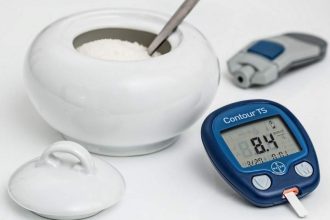Data from the Substance Abuse and Mental Health Services Administration show that 19.3 million Americans suffer from substance abuse disorders, and 51.5 million have mental disorders. Of these numbers, 9.5 million suffer from substance abuse disorders and mental illnesses.
What do these data tell us? Addiction and mental health are closely linked. They both affect a person’s mind, body, and emotions. According to the National Institute on Drug Abuse, substance addiction alters brain function in ways that lead to compulsive behavior: a sign of mental illness. In other words, because drug addiction affects the brain, it is considered a mental disorder.
What Is a Mental Health Disorder?
Mental disorders can affect your mood, thought process, and behavior. A person may experience mental health issues now and then. However, persistent symptoms that cause stress or interfere with their ability to function will lead to a diagnosis of mental illness.
Some of the most common mental disorders, such as schizophrenia, PTSD, OCD, and bipolar disorder, are more prevalent in people aged 18- 25. They come in different forms and have different symptoms.
These conditions can make it difficult for a person to lead a normal life. Fortunately, most of these conditions can be managed or treated with medication or therapy. Do not be afraid to ask for help.
Signs and Symptoms of Mental Health
Although each mental disorder is unique, there are common signs that can help you determine if you require treatment. These symptoms include:
- Extreme mood swings
- Withdrawal from friends, family, and other activities
- Major changes in eating habits
- Inability to deal with everyday problems or stress
- Feeling down or sad
- Problems with alcohol and drug abuse
- Suicidal thoughts
- Confusion
- Paranoia, hallucination, and detachment from reality
- Extreme guilt or excessive fears and worries
- Low energy, significant tiredness, or trouble sleeping
- Anger, hostility, or excessive violence
- Problems understanding and relating with people and situations
- Reduced ability to focus
- Changes in sex drive
Risk Factors
Many risk factors can lead to mental illnesses; the more you have, the more likely you are to develop a mental illness. These risk factors don’t just affect the likelihood of a person developing a mental illness; they also impact the severity of their symptoms. These are some risk factors for developing mental disorders:
- Previous mental illness
- Chronic medical condition
- Traumatic experiences
- Childhood history of neglect or abuse
- Family history of mental illness
- Traumatic brain injury
- Few friends or healthy relationships
- Stressful life situations like financial difficulties, the death of a loved one, or stress
- Alcohol consumption and recreational drug use
Mental illness is widespread; one in five adults will experience a mental disorder in any given year. It can begin at any age but usually starts earlier in life.
Mental illnesses have temporary and long-lasting effects, and it’s possible to have multiple mental health disorders at once. For instance, you may have both depression and a substance abuse disorder.
Substance Abuse and Mental Health Disorders
Mental disorders and substance abuse both affect the same brain areas. They also impact our ability to make good decisions and control our behavior. They affect all ages, regardless of socioeconomic status, race, or gender.
Factors
According to a center for addiction recovery in Murfreesboro, these are the main factors that connect mental health disorders to substance abuse:
- Substances that worsen mental disorders: A substance abuse disorder may contribute to mental illness.
- Self-medication: Individuals with mental illnesses find it difficult to manage their symptoms. This can lead to drug and alcohol dependence and abuse.
- Genetic risk factors: People with a history of addiction or mental illness in the family are more likely to get an addiction or co-occurring disorder.
Overlapping Signs
Mental health professionals use different signs to detect the overlap between substance abusers and mental disorders. These signs are:
- Neglecting your physical health and hygiene
- Stress management using substances
- Problems at school and work
- Sobriety causes anxiety or depression.
- Changes in mood or behavior
- Use substances to overcome negative emotions or memories
Dual Diagnosis or Co-occurrence
Combinations of substance abuse disorders or mental disorders can occur at the same time. These are known as “co-occurring disorders” or “dual diagnosis.”
The statistics for people with co-occurring mental and substance abuse disorders are similar. A recent Surgeon General Report revealed that more than 40% of those who abuse substances also have a mental disorder. But, only half of those who use substances or have mental disorders seek treatment. Despite the improvements brought about by awareness, mental health issues continue to have a stigma that keeps people from seeking the help they need.
Key Takeaway
The brain is the primary organ affected by mental health disorders and substance abuse. It makes sense for substance abuse and mental health disorders to occur simultaneously. They share many factors like family history, self-medication, and substance use that worsen mental health disorders. They also have overlapping signs like neglect of health and hygiene, changes in mood or behavior, substance use to overcome negative emotions, and more.
A person with a mental disorder and substance abuse should seek professional help. They are the only ones qualified to diagnose both disorders accurately and provide a dual diagnosis. Do not self-diagnose mental disorders using tests that are on the internet.















